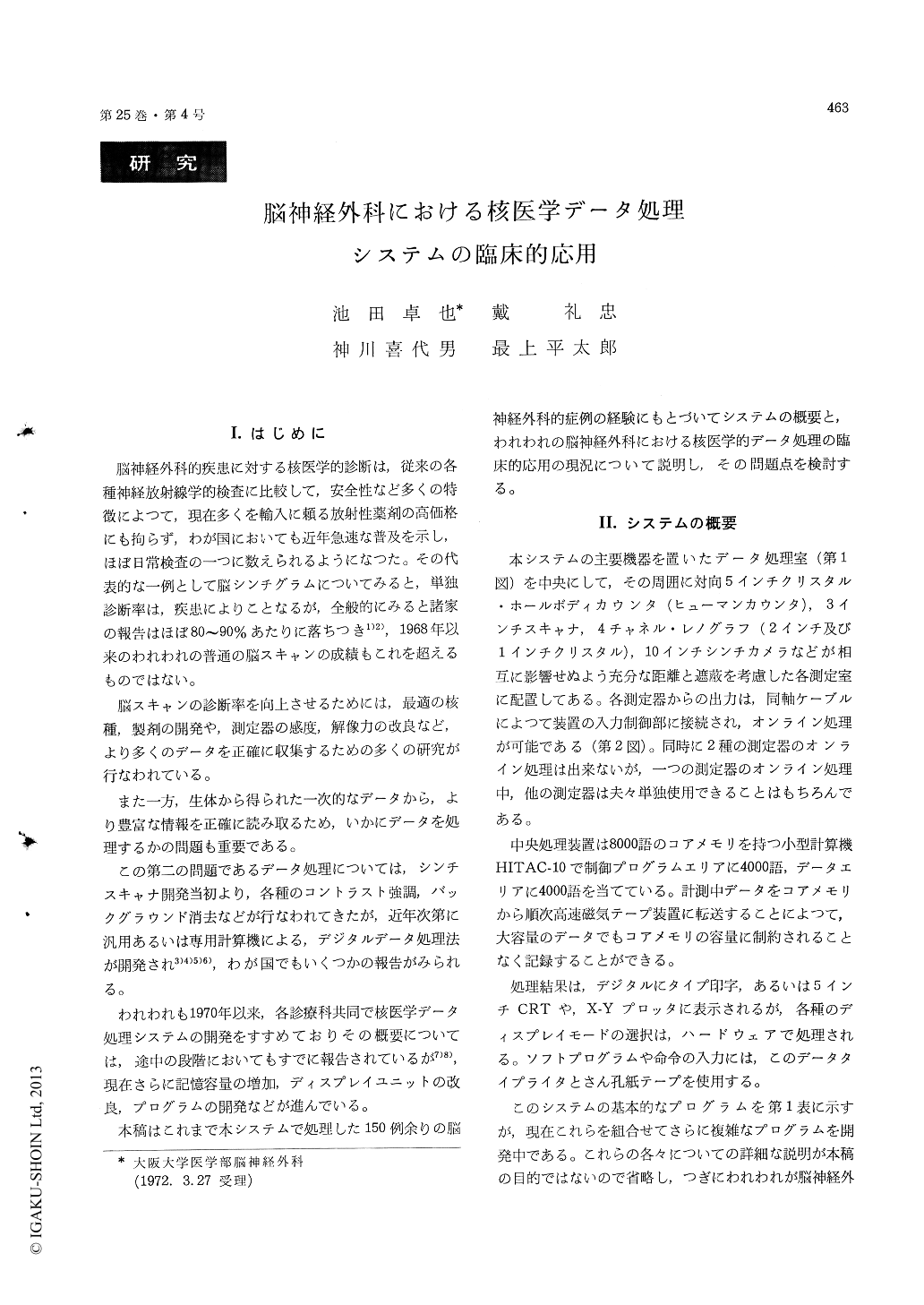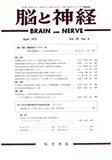Japanese
English
- 有料閲覧
- Abstract 文献概要
- 1ページ目 Look Inside
I.はじめに
脳神経外科的疾患に対する核医学的診断は,従来の各種神経放射線学的検査に比較して,安全性など多くの特徴によって,現在多くを輸入に頼る放射性薬剤の高価格にも拘らず,わが国においても近年急速な普及を示し,ほぼ日常検査の一つに数えられるようになつた。その代表的な一例として脳シンチグラムについてみると・単独診断率は,疾患によりことなるが,全般的にみると諸家の報告はほぼ80〜90%あたりに落ちつき1)2),1968年以来のわれわれの普通の脳スキャンの成績もこれを超えるものではない。
脳スキャンの診断率を向上させるためには,最適の核種,製剤の開発や,測定器の感度,解像力の改良など,より多くのデータを正確に収集するための多くの研究が行なわれている。
A RI-data processing system has been developed since 1970 by the nuclear medical group which consists of medical and technical personnels of various department of Osaka University Hospital.
The central processing unit with 8,000 words memory (HITAC 10) recieves digital data from one of following measuring instruments ; 4 channels renograph, 3 inches rectilinear scanner, 10 inches gamma camera and dual 5 inches whole body count-er, at a time through each input interface circuits. A high speed magnetic tape unit supplements the core memory during the measurement and enables any data beyond the capacity of memory to be processed. The processed results are displayed on a data-typewriter, X-Y plotter or display unit with 5 inches CRT.
A renograph is used for external detection of radioactivities injected intravenously prior to a routine brain scintigram, to estimate the cerebral circulation. Multiple smoothing and differential calculus of this curve of radioencephalogram with this system, makes measurement of the mean transit time much easier than that on an ink drawn curve. Unprocessed original data of scanner or gamma camera stored in the magnetic tape from the core memory are to be interpreted later on, by an ex-perienced physician with the most suitable process-ing for individual cases, and collecting data may be left to technical personnel who rigidly follow the routine procedure.
The image of scanner which is processed partially as the counts on areas of 1.5mm × 1.5 mm, has better resolution theoretically than that of gamma camera which is composed of areas of 4 mm × 4 mm, and both of them are fine enough practically. Serial scintigrams of short period after rapid admi-nistration of radionuclide are utilized for dynamic study of the cerebral circulation, and have an advantage in estimation of blood flow of any region of interest in localized vascular diseases such as A-V malformation, even with the interruption of sampling due to the dead time for transfer.
This system is believed to have an advantage in utility and flexibility compared with a general purpose computer with huge memory or a small one designed for the exclusive use. And this system has not shown marked improvement in the diagnostic rate, qualitative improvement, however, has been proved in considerable cases such as low grade astrocytomas among 150 neurosurgical cases examined with this system so far.
Automatic diagnosis may not be so difficult in 2 dimensional data like REG curves, there may be, however, still long way to go to process 3 dimensional data of scintigram automatically with a lot of difficulties in pattern recognition.
Although the pattern recognition is left to phy-sician's eyes at present, this system must be valuable in providing more parameters for the qualitative improvement of diagnosis.

Copyright © 1973, Igaku-Shoin Ltd. All rights reserved.


